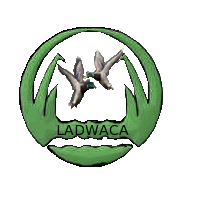
CLUB HISTORY >>
Wildfowling in Langstone Harbour has a long history. Documentary evidence exists of wildfowling with firearms as far back as 1630. In the period from 1790 to 1945 the Portsmouth, Langstone, Chichester Harbour complex supported some 140 professional or semi-professional wildfowlers.
Today traditional wildfowling is carried out on a far more modest scale than in the past, but nonetheless remains an important component of the human fabric of the harbour.
Colonel Hawker visited the area in 1827 and in his diary described it as "without exception the finest gunning place I ever saw, but if possible more infested with gunners than Keyhaven". During the 1930s and 40's Christopher Dalgetty and Sir Peter Scott, both shot Langstone Harbour regularly. Sir Peter Scott was the founder of the WWT, the Wildfowl and Wetlands Trust and a keen wildfowler.
Much of the early wildfowling in the area was punt-gunning, and there is a body of evidence to support the theory that the south coast harbours were the "cradle" from which this branch of the sport originated.
In 1956 a group of far-sighted sportsmen formed the Langstone & District Wildfowlers & Conservation Association, their aim being to protect and preserve the art of wildfowling, and the wildfowl and their habitat. It is interesting to note that the word "conservation" was incorporated into the association's name over sixty years ago, long before the word became fashionable.
Shooting in Langstone Harbour prior to the formation of LADWACA had been totally unregulated. This changed dramatically once the association obtained exclusive shooting rights and could control the development of wildfowling. A code of conduct was produced and a wardening scheme implemented.
LADWACA has the oldest and longest-running wardening system within the harbour.
Shortly after its formation the association affiliated to WAGBI - The Wildfowlers Association of Great Britain and Ireland, now BASC - the British Association for Shooting and Conservation, an organisation that LADWACA continues to support to this day.
LADWACA is the oldest conservation group within the harbour and has established and managed refuge areas since 1956. LADWACA played a significant part in the setting up of the adjacent Farlington Marshes NNR and continues to work closely with the Hampshire Naturalists Trust with whom it holds a joint management lease on an unshot reserve area. The clubs part in helping to set up the Farlington Marshes Reserve and assisting with its present-day running is readily acknowledged by the Trust.
In 1972 the association was instrumental in the formation of the Langstone Harbour Conservation Group, a forerunner of today's estuary strategy groups. LADWACA has also been responsible for the long-term conservation management of a gravel pit on Hayling Island, which was recently designated a SSSI. The club has a representative on the Advisory Committee to the Langstone Harbour Board.
Over the years LADWACA has led the country in the development and use of bag-returns as a management tool. We have pioneered the use of alternative and sustainable non-toxic shot from as early as 1986, and were the first club in the United Kingdom to convert fully to non-lead shot some five years before national legislation was introduced.
For over twenty years we have operated a groundbreaking liaison scheme with the Hampshire Constabulary designed to prevent the wastage of police time by reducing their deployment to unfounded concerns about our activities within the harbour. To date, it is estimated that this scheme has saved taxpayers in the region of £15,000.






